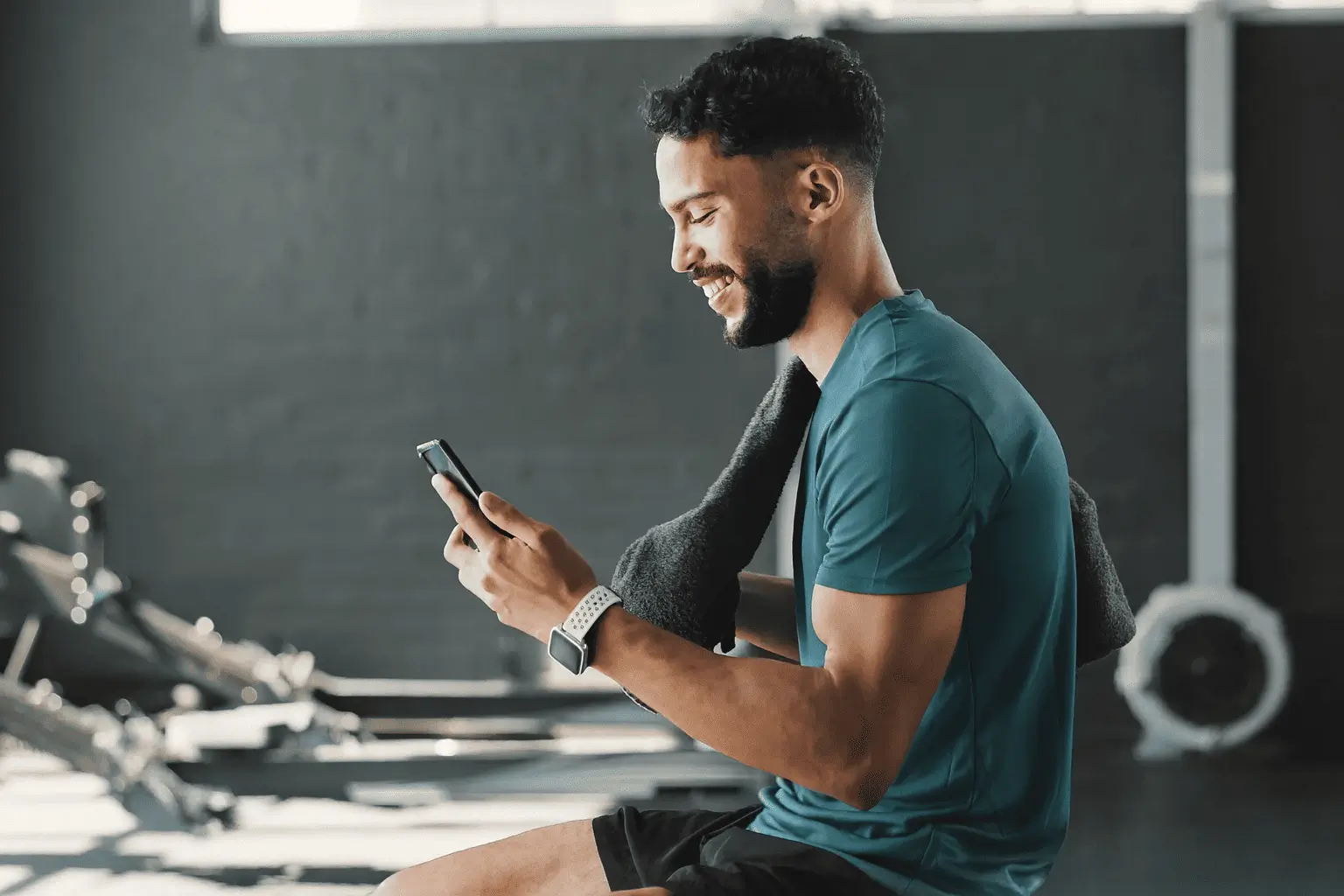Creating a personalized workout plan is one of the most effective ways to achieve your fitness goals. Whether you’re looking to build muscle, lose weight, increase endurance, or simply improve overall health, a well-crafted workout plan tailored to your specific needs can make all the difference. This comprehensive guide will walk you through the steps to develop a workout regimen that meets your unique goals, ensuring you stay motivated, safe, and on track.
Understanding Your Fitness Goals
The first step in creating a personalized workout plan is to define your fitness goals. These goals will guide your exercise selection, frequency, intensity, and overall structure of your workout regimen.
Common Fitness Goals
- Weight Loss: If your primary goal is to lose weight, your focus should be on burning calories and creating a caloric deficit. This typically involves a combination of cardiovascular exercises and strength training.
- Muscle Gain: For those looking to build muscle, the emphasis will be on strength training exercises that target different muscle groups, along with a nutrition plan that supports muscle growth.
- Endurance: If you aim to improve your endurance, cardiovascular activities such as running, cycling, or swimming will be central to your plan.
- Flexibility and Mobility: Improving flexibility and mobility can enhance overall fitness and reduce the risk of injury. This goal might include yoga, Pilates, and specific stretching routines.
- General Fitness: For overall health and well-being, a balanced approach that includes cardio, strength training, flexibility, and mobility exercises is ideal.
Setting SMART Goals
To ensure your fitness goals are clear and attainable, consider using the SMART criteria:
- Specific: Clearly define what you want to achieve.
- Measurable: Establish criteria to measure your progress.
- Achievable: Set realistic goals that are attainable given your current fitness level and resources.
- Relevant: Ensure your goals align with your overall lifestyle and long-term objectives.
- Time-bound: Set a deadline for achieving your goals to stay motivated and focused.
Assessing Your Current Fitness Level
Before starting any new workout plan, it’s important to assess your current fitness level. This assessment will help you understand your starting point and track your progress over time.
Components of a Fitness Assessment
- Cardiovascular Endurance: Measure how well your heart and lungs work together to supply oxygen during sustained physical activity. A common test is the 1.5-mile run or a timed step test.
- Muscular Strength: Evaluate your maximum strength in different muscle groups. This can be done through exercises like the bench press or squat.
- Muscular Endurance: Assess how long your muscles can perform a specific exercise. Examples include push-ups or sit-ups to failure.
- Flexibility: Measure the range of motion around your joints. The sit-and-reach test is a standard flexibility assessment.
- Body Composition: Determine the ratio of fat to lean mass in your body. Methods include skinfold measurements, bioelectrical impedance, or DEXA scans.
Recording Baseline Measurements
Document your baseline measurements to establish a starting point. This includes weight, body measurements (such as waist, hips, arms, and legs), and fitness assessment results. Having these records will allow you to track progress and make necessary adjustments to your plan.
Designing Your Workout Plan
Once you have clear goals and an understanding of your current fitness level, it’s time to design your personalized workout plan. This involves selecting the right exercises, determining the frequency and intensity of your workouts, and creating a balanced schedule.
Choosing the Right Exercises
The exercises you choose should align with your fitness goals. Here’s a breakdown of different types of exercises and their benefits:
- Cardiovascular Exercises: These exercises increase your heart rate and improve cardiovascular health. Examples include running, cycling, swimming, and high-intensity interval training (HIIT).
- Strength Training: Focus on exercises that build muscle strength and endurance. This includes weightlifting, bodyweight exercises (such as push-ups and squats), and resistance band workouts.
- Flexibility and Mobility: Incorporate stretching, yoga, or Pilates to enhance flexibility and reduce the risk of injury.
- Balance and Stability: Exercises like single-leg stands, stability ball exercises, and balance board exercises improve coordination and stability.
Structuring Your Workouts
A well-structured workout plan should include a variety of exercises to target different muscle groups and fitness components. Here are some key considerations:
- Warm-Up: Begin each workout with a warm-up to prepare your body for exercise. This can include light cardio (like jogging or jumping jacks) and dynamic stretches.
- Main Workout: This is the core of your workout plan and will vary based on your goals. For example, a muscle gain plan will focus on strength training, while a weight loss plan will include more cardio.
- Cool Down: End each workout with a cool-down to gradually lower your heart rate and stretch your muscles. This helps prevent injury and aids in recovery.
Frequency and Intensity
The frequency and intensity of your workouts should match your fitness goals and current fitness level.
- Frequency: How often you work out will depend on your goals and schedule. Generally, aim for at least three to five workouts per week.
- Intensity: The intensity of your workouts should be challenging but manageable. Use the Rate of Perceived Exertion (RPE) scale or monitor your heart rate to gauge intensity.
Creating a Balanced Schedule
Balance is key to a successful workout plan. Ensure you include:
- Cardio Days: Designate specific days for cardiovascular exercises to improve heart health and burn calories.
- Strength Training Days: Allocate days for strength training to build and tone muscles.
- Rest and Recovery: Incorporate rest days to allow your body to recover and prevent overtraining. Active recovery activities like light stretching or walking can also be beneficial.
- Flexibility and Mobility Work: Include regular flexibility and mobility exercises to maintain joint health and prevent injuries.
Nutrition and Hydration
A personalized workout plan isn’t complete without considering nutrition and hydration. Proper fueling and hydration are crucial for performance, recovery, and overall health.
Macronutrients
Understanding the role of macronutrients (carbohydrates, proteins, and fats) is essential for optimizing your diet.
- Carbohydrates: Provide energy for your workouts. Focus on complex carbs like whole grains, fruits, and vegetables.
- Proteins: Essential for muscle repair and growth. Include lean protein sources such as chicken, fish, tofu, and legumes.
- Fats: Important for overall health and energy. Choose healthy fats from sources like avocados, nuts, seeds, and olive oil.
Micronutrients
Micronutrients (vitamins and minerals) are vital for various bodily functions, including muscle contraction and recovery. Ensure a balanced diet rich in fruits, vegetables, and whole foods to meet your micronutrient needs.
Hydration
Staying hydrated is crucial for optimal performance and recovery. Aim to drink water throughout the day, especially before, during, and after workouts. Electrolyte-rich drinks can be beneficial for intense or prolonged exercise sessions.
Pre- and Post-Workout Nutrition
- Pre-Workout: Consume a balanced meal or snack that includes carbohydrates and protein about 1-2 hours before exercise. This will provide energy and support muscle function.
- Post-Workout: After exercising, focus on replenishing glycogen stores and repairing muscles. A combination of protein and carbohydrates within 30-60 minutes post-workout is ideal.
Tracking Progress and Making Adjustments
Monitoring your progress is crucial for staying on track and making necessary adjustments to your workout plan.
Methods for Tracking Progress
- Fitness Apps: Use fitness apps to log workouts, track progress, and set reminders.
- Workout Journal: Keep a journal to record exercises, sets, reps, and how you feel during each workout.
- Progress Photos: Take regular photos to visually track changes in your body composition.
- Measurements: Regularly measure key areas of your body to track changes in muscle size and body fat.
- Performance Metrics: Track improvements in strength, endurance, flexibility, and other fitness components.
Making Adjustments
As you progress, you may need to adjust your workout plan to continue challenging your body and avoid plateaus.
- Increase Intensity: Gradually increase the weight, reps, or intensity of your exercises to keep challenging your muscles.
- Change Exercises: Incorporate new exercises or variations to target muscles differently and prevent boredom.
- Modify Frequency: Adjust the number of workout days based on your progress and recovery needs.
- Reassess Goals: Periodically reassess your fitness goals and adjust your plan accordingly.
Staying Motivated
Maintaining motivation is key to sticking with your workout plan and achieving your goals.
Tips for Staying Motivated
- Set Short-Term Goals: Break down your long-term goals into smaller, achievable milestones.
- Find a Workout Buddy: Exercising with a friend can provide accountability and make workouts more enjoyable.
- Mix Up Your Routine: Vary your workouts to keep things interesting and prevent boredom.
- Reward Yourself: Celebrate your achievements with non-food rewards, such as new workout gear or a massage.
- Stay Positive: Focus on the positive changes you’re making and be patient with your progress.
Overcoming Common Challenges
- Time Constraints: Prioritize shorter, high-intensity workouts if you’re short on time.
- Plateaus: Adjust your workout plan to introduce new challenges and avoid stagnation.
- Lack of Motivation: Set new goals, try new activities, or seek support from friends or a fitness community.
- Injuries: Listen to your body and modify exercises to avoid aggravating injuries. Consult a healthcare professional if needed.
Conclusion
Creating a personalized workout plan requires careful consideration of your fitness goals, current fitness level, and lifestyle. By following the steps outlined in this guide, you can develop a workout regimen that is tailored to your specific needs and preferences. Remember to stay patient, stay motivated, and enjoy the journey towards achieving your fitness goals. With dedication and consistency, you will see progress and reap the benefits of a healthier, stronger, and more vibrant you.
### Latest Trends in Personalized Workout Plans As of 2023, technology continues to play a significant role in personalizing workout plans. Wearable fitness technology, such as smartwatches and fitness trackers, now offer advanced features like real-time heart rate monitoring, sleep tracking, and personalized workout suggestions based on your daily activity levels. Additionally, AI-driven fitness apps are gaining popularity, providing users with customized workout routines and nutrition advice tailored to their specific goals and progress. ### The Role of Mental Health in Fitness Recent studies emphasize the importance of integrating mental health practices into fitness routines. Mindfulness exercises, such as meditation and breathing techniques, are increasingly being incorporated into workout plans to enhance mental well-being and reduce stress. This holistic approach not only supports physical health but also improves motivation and adherence to fitness goals. ### Sustainable Fitness Practices Sustainability in fitness is becoming a key focus, with more individuals seeking eco-friendly workout options. This includes outdoor workouts, using minimal equipment, and supporting gyms and fitness brands that prioritize sustainability. Additionally, there’s a growing trend towards digital fitness platforms that reduce the need for physical travel, thereby minimizing carbon footprints.















One Comment